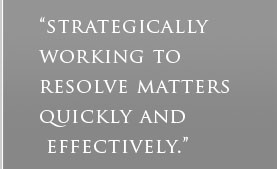SANDAG approves trolley extension report
By
James Palen, November 21, 2014
Work
to extend the San Diego Trolley Blue Line from the international
border to UC San Diego and surrounding areas is expected to
start in late 2015.
The
San Diego Association of Governments' board of directors Friday
unanimously certified the project's final environmental impact
report after last month's federal approval of environmental
documents.
The
$2 billion project will provide a no-transfer transit alternative
to highway use for commuters between the international border
and communities south of downtown San Diego to UCSD and University
City.
Proponents
say the line will connect residents directly to job centers.
SANDAG projects it to increase daily transit ridership by
21,000 riders. The metropolitan planning organization also
said construction will result in more than 14,000 local jobs.
“This
project will not only provide additional travel choices for
residents, it will also be a major boost to the regional economy,”
said Santee Councilmember Jack Dale, chair of the SANDAG board
of directors.
As
much as environmental groups have asked SANDAG to focus more
on transit opportunities, the Mid-Coast Trolley project is
not without problems.
The
Friends of Rose Canyon organization cited concerns about noise
from the trolley line near sensitive habitat.
SANDAG
had earlier considered extending the trolley line through
Rose Canyon, instead of around it, but decided against it
because of environmental concerns.
Still,
Friends of Rose Canyon says the buffer between the project
and canyon habitat is still too small to avoid noise and visual
impact.
Everett
Delano, an Escondido-based environmental attorney representing
the organization, said effects to the canyon will be greater
than SANDAG represented in its report.
"There's
analysis in EIR ... that talks about the notion that the project
is not actually within Rose Canyon," Delano said. "From
the standpoint of physical boundaries, that's true, but any
of you who've had neighbors who might impact you, you know
you don't have to be within the boundaries of particular views
in order to have impact on that view."
Delano
said it appeared as though SANDAG's estimates of noise impacts
were skewed because they used averages that included both
times when trolleys would pass by as well as times when they
would not.
SANDAG
staff defended its analyses of visual and noise level impacts,
stating that visually, the impact will not be significant,
because the trolley extension will be built beside an existing
Amtrak rail line.
SANDAG
also said its noise analysis used real-time peak noise levels,
known as "Lmax" levels of "A-weighted"
decibels or dBa, that would be created at the moment of a
trolley's passing.
"The
L-max level created by either Amtrak or the commuter rail
line would be 10 dba higher than the levels created by the
trolley — the train operations of the trolley,"
Steve Wolf, a noise consultant to SANDAG stated in his description
of the SANDAG analysis.
Sean
Karafin, an economic policy analyst with the San Diego County
Taxpayers Association, said his group favors the project because
taxpayers approved the extension of SANDAG's half-cent TransNet
sales tax.
Now
that SANDAG's board has certified the final environmental
document, the next step is to seek approval from the Federal
Transit Administration for final engineering, and to secure
a full funding grant agreement from the FTA’s New Starts
program.
SANDAG
said the grant agreement will provide half the funding; the
rest will be the TransNet tax.
Separately
on Friday, the SANDAG board heard information on new analysis
for the potential funding and planning impacts of front-loading
— for the next 10 years — many long-range transit
projects, some as late as 2050.
On
Sept. 12, the SANDAG board accepted its preferred transportation
network related to the San Diego Forward regional plan, but
many transit advocates expressed disappointment that there
was no option to move many of the long-range transit projects
to the front of the timeline.
Though
it may not necessarily change SANDAG’s direction, SANDAG
said the analysis will be used for future planning and funding
strategies.
Preliminary
results, which will look at two "accelerated transportation
scenarios," will be presented to the Transportation Committee
in January, and will be discussed at the board's retreat later
that month.
top
|











